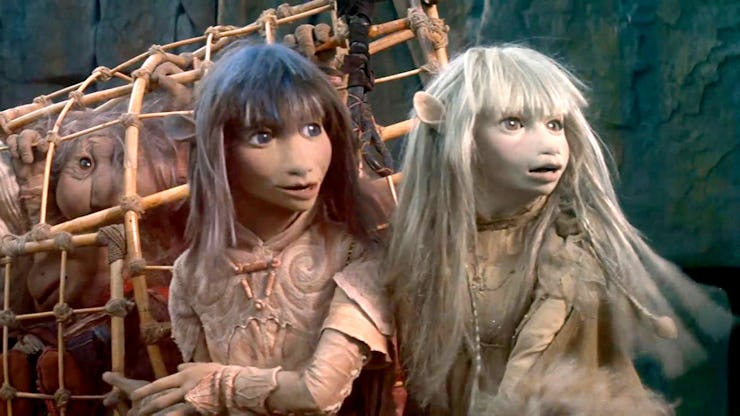Remember when Muppet master Jim Henson made a movie that scared the hell out of kids?
No one expected a passion project to take such a disturbing turn.

In 1982, master puppeteer Jim Henson released his first non-Muppet film, The Dark Crystal, with a cast comprised entirely of puppets. Henson was already renowned for his work on The Muppets and Sesame Street, so a new puppet production seemed like an excellent idea for a children’s film. Then parents saw how dark and disturbing a puppet fairy tale could be.
The Dark Crystal takes place on the once thriving but now desecrated planet of Thra. After a shard was broken from the Crystal of Truth, two races appeared: The gentle Mystics and the evil Skeksis. The Skeksis took control of the Crystal and corrupted its power to grant them immortality, making them Thra’s ruling class.
And then there’s Jen, an elf-like humanoid called a Gelfling. Fear of an ancient prophesy that states a Gelfling will heal the Dark Crystal and bring peace to Thra prompts the Skeksis to commit genocide, but Jen is saved and raised by the Mystics to fulfill his destiny. While on his quest, Jen discovers another survivor, Kira, and together they journey to find the Crystal and restore it to its rightful state.
The Dark Crystal’s strengths do not lie in storytelling. We’re given a hefty exposition dump at the beginning, and there’s a lot of information to keep track of. The movie is only 93 minutes long, which isn’t much time to flesh out an entire fantasy world and all its intricacies.
Likewise, the characters aren’t very well-developed. Jen isn’t the most compelling hero, and it’s hard to know whether he’s actually grown during his adventure because we don’t have a sense of who he was at the beginning. Kira isn’t much better, although she’s definitely the more active character, exhibiting more wherewithal and communicating with animals.
But The Dark Crystal is remembered for its amazing visuals and masterful puppetry. Thra is gorgeous, and you can see the loving work that went into creating it.
Despite its flaws, The Dark Crystal remains a lush spectacle.
Unlike Henson’s Muppet movies, where live actors interacted with puppets, The Dark Crystal is an all-puppet film. And these puppets aren’t cartoonish — the goal was to make them as lifelike as possible. Its heroes may be forgettable, but you’ll never forget The Dark Crystal’s terrifying villains, the Sheksis. These grotesque, vulture-reptile hybrids gave a generation of children nightmares.
Their raspy, menacing voices are blood-curdling, and even the way they move is freaky. Their hulking steps are memorable because they’re puppets; the Skeksis wouldn’t be nearly as intimidating if they were animated or computer-generated. It doesn’t help that we see them drain cute and peaceful creatures called Podlings of their life essence in one of Dark Crystal’s more infamous scenes.
Henson had been working on the slapstick humor of the Muppets for a long time, and his desire to flex his creativity took him to strange and fascinating places. His passion project was an enormous undertaking that took over five years to complete, and even then, he still ran into trouble. After test audiences were confused about the Skeksis’ language, prompting Henson to redo their dialogue in English), the production company, ITC Entertainment, demanded more drastic changes. Rather than sacrifice his vision, Henson spent $15 million of his own money to buy back The Dark Crystal.
Not a guy you want to run into at night.
According to a San Francisco Gate interview with Frank Oz, “What Jim wanted to do – and it was totally his vision – was to get back to the darkness of the original Grimm fairy tales. He thought it was fine to scare children. He didn’t think it was healthy for children to always feel safe.”
Well, Henson accomplished that goal. While The Dark Crystal struggled to make money and received mixed reviews, there’s little doubt that some children of the ’80s spent a week sleeping with the lights on. It may not have revolutionized storytelling or prompted a puppet fantasy Renaissance, but its visuals and puppetry remain breathtaking today. But do keep the lights on, just in case.